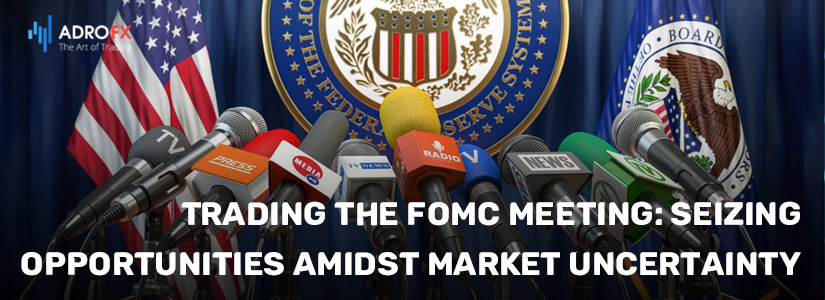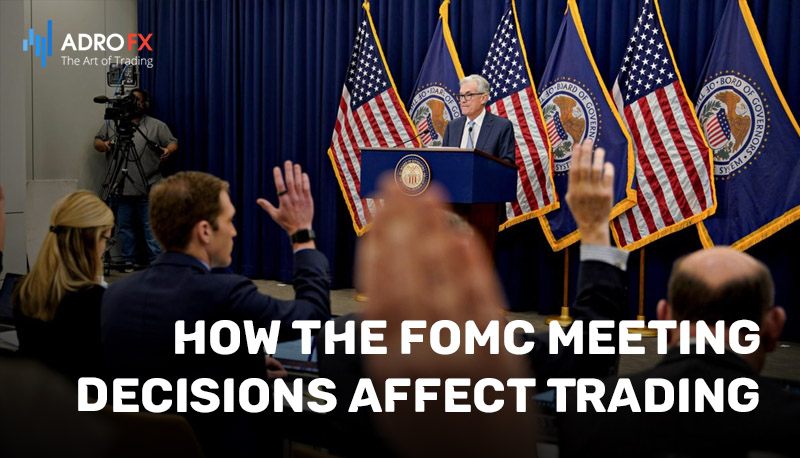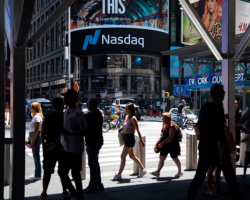Trading the FOMC Meeting: Seizing Opportunities Amidst Market Uncertainty

The Federal Open Market Committee (FOMC) meetings have long been the focal point of market anticipation and volatility. As the key decision-making body of the Federal Reserve System, the FOMC convenes regularly to discuss and decide on crucial monetary policy measures that shape the economic landscape of the United States. These meetings are highly significant for traders and investors worldwide, as they offer unique opportunities to capitalize on swift market movements and uncover profitable positions.
In this article, we delve into the world of trading during FOMC meetings, exploring the mechanics of these pivotal events, their impact on financial markets, and the strategies that can help traders navigate the often turbulent waters of uncertainty. Whether you're a seasoned investor or a novice trader, understanding how to interpret and respond to FOMC announcements can make all the difference in achieving success in the financial markets.
What Is the FOMC?
The Federal Open Market Committee (FOMC) is a vital component of the Federal Reserve System, charged with the crucial responsibility of formulating monetary policy for the United States. Comprising of twelve members, the FOMC includes the seven governors of the Federal Reserve Board and five Reserve Bank presidents. The committee convenes approximately eight times a year to assess the current economic conditions and deliberate on the appropriate course of action to achieve the dual mandate of the Federal Reserve: price stability and maximum sustainable employment. During these closed-door meetings, members analyze economic indicators, financial data, and market trends to make informed decisions that can have far-reaching effects on interest rates, money supply, and overall economic growth. As the FOMC's policy decisions significantly influence financial markets and impact investor sentiment globally, understanding its workings and anticipating its outcomes becomes paramount for traders seeking to gain a competitive edge in their trading strategies.

Is the Fed the Same as the FOMC?
While the terms "Federal Reserve" and "FOMC" are closely related, they refer to distinct entities within the U.S. monetary system. The Federal Reserve, often simply referred to as "the Fed," is the central banking system of the United States. It is responsible for a range of important functions, including regulating financial institutions, overseeing the stability of the financial system, and implementing monetary policy.
On the other hand, the Federal Open Market Committee (FOMC) is a committee within the Federal Reserve System. It plays a crucial role in the formulation and implementation of the country's monetary policy. The FOMC is responsible for making decisions on key matters such as interest rates and money supply, which directly impact economic conditions and financial markets.
Key Tools in the FOMC Toolbox
The Federal Open Market Committee (FOMC) wields several powerful tools to steer the US economy toward its dual mandate of price stability and maximum sustainable employment. Among these tools, two primary instruments stand out: interest rates and quantitative easing. The FOMC employs these mechanisms to influence borrowing costs, money supply, and overall economic activity, thereby playing a pivotal role in shaping the financial landscape. Understanding how these tools work and their impact on markets is essential for traders seeking to navigate the complexities of FOMC policy decisions and capitalize on potential opportunities. Let's explore these key tools in detail:
- Interest Rates
One of the most potent weapons in the FOMC's arsenal is the ability to set the target federal funds rate. The federal funds rate is the interest rate at which depository institutions (such as banks and credit unions) lend reserve balances to other institutions overnight on an uncollateralized basis. This rate, in turn, influences a wide range of borrowing and lending rates throughout the economy.
When the FOMC wants to stimulate economic growth, it may lower the target federal funds rate. By doing so, borrowing becomes cheaper for consumers and businesses. Lower interest rates can encourage spending, investment, and borrowing, all of which can boost economic activity and employment.
Conversely, when the FOMC aims to rein in inflation or prevent an overheating economy, it may opt to raise the federal funds rate. Higher interest rates make borrowing more expensive, which can lead to reduced spending and investment, helping to cool down economic growth.
- Quantitative Easing (QE)
Quantitative easing is an unconventional monetary policy tool employed by the FOMC in times of economic distress, particularly when traditional interest rate adjustments have reached their limits. In QE, the central bank purchases financial assets, typically government bonds and, in some cases, other securities, from the open market. By doing so, the Fed injects money into the financial system, increasing the money supply.
The aim of QE is to lower long-term interest rates, boost lending, and provide liquidity to financial institutions, encouraging them to lend more freely to consumers and businesses. Additionally, QE can help stabilize financial markets and support asset prices during times of turmoil.
Throughout the years, the FOMC has utilized these tools in various combinations and magnitudes to respond to economic challenges and opportunities. As traders brace for FOMC meetings and their policy announcements, keeping a keen eye on interest rate decisions and the possibility of QE implementation can be the key to successful trading strategies amidst the dynamic forces of the financial markets.

How the FOMC Meeting Decisions Affect Trading
The Federal Open Market Committee (FOMC) meetings hold immense significance for financial markets, and their decisions can trigger substantial volatility and shape trading opportunities. The FOMC's pronouncements and policy adjustments have far-reaching effects on various asset classes, investor sentiment, and global economic dynamics. Understanding how these decisions impact trading is crucial for traders seeking to navigate the rapidly changing market landscape. Here are some of the ways in which FOMC meeting decisions influence trading:
- Interest Rate Changes
The FOMC's decisions on interest rates have an immediate and direct impact on financial markets. A rate hike can lead to higher borrowing costs, dampening consumer spending and business investments, which can, in turn, lead to declines in equity markets. Conversely, a rate cut may boost borrowing and stimulate economic activity, resulting in potential gains for equities. Forex markets are also particularly sensitive to interest rate changes, as they can affect currency valuations and exchange rates.
- Market Sentiment and Volatility
The uncertainty surrounding FOMC meetings often leads to increased market volatility. Traders closely analyze statements from policymakers and scrutinize economic projections to gauge the committee's sentiment. Even subtle changes in the tone of FOMC communications can trigger significant market movements. Elevated volatility can present both opportunities and risks for traders, depending on their risk appetite and trading strategies.
- Impact on Bond Markets
FOMC decisions significantly influence the bond market, where yields move inversely to prices. Interest rate changes can lead to shifts in bond yields, affecting the attractiveness of fixed-income investments. For example, rising interest rates can cause existing bond prices to fall, resulting in potential losses for bondholders. On the other hand, falling rates may lead to price gains for bonds.
- Commodity Prices
FOMC meetings can also influence commodity prices. Changes in interest rates or policy outlook can impact the U.S. dollar's strength, which, in turn, affects commodity prices denominated in dollars. Additionally, shifts in economic growth expectations resulting from FOMC decisions can impact demand and supply dynamics for various commodities.
- Stock Market Reactions
Equity markets are particularly sensitive to FOMC decisions, as interest rates and economic outlook can significantly impact corporate earnings and profitability. Traders closely monitor the FOMC's guidance on future rate movements and economic conditions, which can influence investment decisions and stock valuations.
- Investor Risk Appetite
FOMC meetings have implications for investor risk appetite. Policy decisions that indicate a more accommodative stance can boost riskier assets like stocks and high-yield bonds, as investors seek higher returns. Conversely, a more hawkish tone from the FOMC may drive investors towards safer assets like government bonds and gold.

How to Prepare for the FOMC Decision
The Federal Open Market Committee (FOMC) meetings can be critical events for traders and investors, with the potential to significantly impact financial markets. Being well-prepared and informed ahead of these meetings is essential for making prudent trading and investment decisions. Here are some valuable tips to help traders and investors prepare for the FOMC decision:
- Stay Informed on Economic Indicators
Keep a close eye on key economic indicators that the FOMC considers when formulating monetary policy. These may include employment data (non-farm payrolls), inflation figures (Consumer Price Index - CPI), GDP growth rates, retail sales, and manufacturing indices. Understanding the current economic conditions can provide insights into the potential direction the FOMC may take with its policy decisions.
- Review Previous Meeting Minutes and Statements
Analyze the minutes and statements from previous FOMC meetings to gain a deeper understanding of the committee's thought process and priorities. This historical context can help anticipate how the FOMC might respond to current economic conditions and potential risks.
- Assess Market Expectations
Understand the market's consensus expectations regarding the upcoming FOMC decision. Analyze futures contracts, options, and interest rate expectations to gauge market sentiment. Deviations from market expectations can lead to significant market reactions.
- Be Cautious of Pre-FOMC Volatility
Expect increased market volatility leading up to the FOMC decision. Consider reducing position sizes or staying on the sidelines until after the announcement if you are uncomfortable with heightened volatility.
- Be Ready to Act Quickly
FOMC decisions can trigger rapid market movements. Have a clear plan in place for different scenarios and be ready to execute your trading or investment strategy promptly.
- Consider the Fed's Forward Guidance
The FOMC often provides forward guidance on its future policy intentions. Take note of any hints about potential rate hikes or changes to asset purchase programs, as these can significantly influence market sentiment.
- Stay Calm and Avoid Overreaction
Market reactions to FOMC decisions can be intense, but it's essential to stay calm and avoid making emotional decisions. Stick to your pre-established plan and strategy, and avoid making impulsive moves based on short-term fluctuations.
Conclusion
Trading the FOMC meeting can be a thrilling yet challenging endeavor for traders and investors alike. The Federal Reserve's decisions on interest rates and the implementation of quantitative easing have a profound impact on financial markets, creating a climate of volatility and presenting unique opportunities. To navigate this landscape successfully, preparation is key.
By staying informed on economic indicators, FOMC communications, and market expectations, traders and investors can gain valuable insights into the committee's intentions. Analyzing previous meeting minutes provides historical context and helps anticipate potential outcomes. Diversifying portfolios and implementing robust risk management strategies safeguard against market fluctuations.
As FOMC decisions approach, caution is advised regarding pre-meeting volatility. Having a clear plan ready and being prepared to act swiftly after the announcement can be essential in capitalizing on opportunities. Traders should carefully consider the forward guidance provided by the FOMC, as it can offer valuable insights into future policy directions.
Above all, it is crucial to remain calm and avoid impulsive decisions based on short-term fluctuations. By adhering to well-thought-out strategies and maintaining discipline, traders and investors can maximize their chances of success in the face of FOMC-induced market uncertainty.
With the knowledge, tools, and prudence acquired through preparation, market participants can embrace the excitement of FOMC meetings and unlock the potential they hold for astute traders and investors. By mastering the art of trading during FOMC events, one can navigate the dynamic forces of the financial markets and seize opportunities, paving the way towards achieving success in the ever-evolving world of finance.

About AdroFx
Established in 2018, AdroFx is known for its high technology and its ability to deliver high-quality brokerage services in more than 200 countries around the world. AdroFx makes every effort to keep its customers satisfied and to meet all the trading needs of any trader. With the five types of trading accounts, we have all it takes to fit any traders` needs and styles. The company provides access to 115+ trading instruments, including currencies, metals, stocks, and cryptocurrencies, which make it possible to make the most out of trading on the financial markets. Considering all the above, AdroFx is the perfect variant for anyone who doesn't settle for less than the best.









